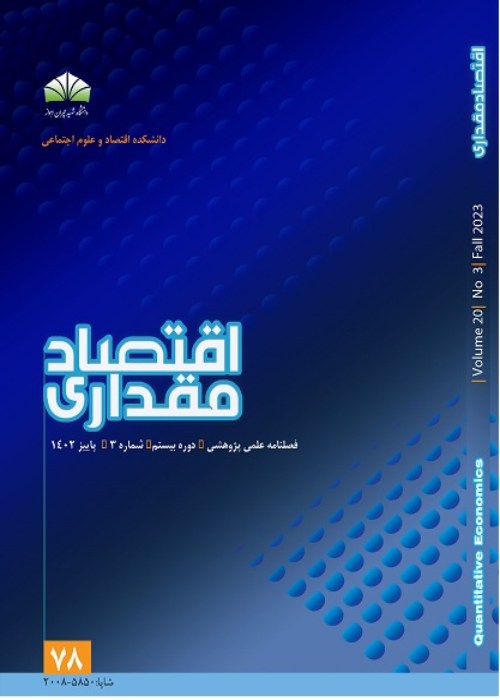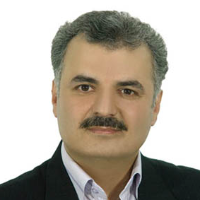Role of Financial Policies in Economic Complexity: Baumol’s Unbalanced Growth Theory Assessment
Author(s):
Article Type:
Research/Original Article (دارای رتبه معتبر)
Abstract:
The set of theories presented on achieving economic growth and development are divided into two main groups: One is balanced growth theory and the other is unbalanced theory. Balanced growth theory states that in order to achieve economic development, it is necessary to start investing in all economic activities and different sectors so that different sectors can support each other. But since this theory is not able to solve problems such as lack of capital and scarcity of resources, it was criticized by proponents of the theory of unbalanced growth. One of the most famous theories of unbalanced growth is the Bamol theory. The Bamol's theory considers the impact of labor and capital productivity growth on other economic sectors as important and emphasizes that productivity growth in the production sector leads to the production of high-tech goods because technology is affected by productivity. This theory is known as the Scandinavian model of inflation and divides the economy into two parts: Leading (private sector) and non-leading (public sector) sectors. Three assumptions are made in this model. Hopothesis 1: Goods and services in the government sector are less attractive and less expensive. Hopothesis 2: Improving and increasing productivity in the private sector is more than the public sector. Hopothesis 3: The wage rate is the same in both the private and public sectors. It can be said that if the rate of production of the public sector remains constant compared to the private sector, then the resources of the labor force must be transferred from the private sector to the public sector. Bamol states that, productivity changes are due to technological changes, and that technological changes are more relevant to capital equipment. Given that government activities are mostly service-oriented, increasing productivity is less likely to lead to higher unit cost of production. One of the important concepts is to pay attention to the economic complexity index, which refers to the production characteristics of knowledge-based products in the country, as well as diversifying the country's export goods. Economic complexity is a criterion for calculating knowledge and skills in a society that is achieved through the products produced in that society, because the ideology associated with it is based on the fact that if the production of a product requires a certain type of knowledge and skills, it can be concluded that the countries that produce that product also have the knowledge and skills needed to produce it. In other words, the products we produce show us the traces of knowledge and skills. The economic complexity index of any country is an average of the values of its exports. In this regard, the government can increase the quality of public services, the quality of civil services, and also increase the credibility of commitment to the implementation of fiscal policies through increasing the productivity of all factors of production and diversify the products. In order to distinguish between domestic and export diversification, it is necessary to know the current situation, to take appropriate policies (here to adopt and implement appropriate fiscal policy) and to refine the exact results of these policies. The purpose of this study is to investigate the role of government financial policies and their effectiveness in the economic complexity index of the Organization of the Islamic Countries (OIC) during 2002-2017, using Generalized Method of Moments (GMM) estimation. The results showed that the total productivity factors, financial development, and government effectiveness have positive effects on the economic complexity of the selected countries, which is in line with Bamol's theory of growth. Moreover, the impact of government size and gross domestic product on the economic complexity is estimated as meaningless. Therefore, with the improvement of institutional and economic regimes, it is necessary to provide suitable bases for using the knowledge of high-tech imported goods in order to have a more diverse export basket.
Keywords:
Language:
Persian
Published:
Quarterly Journal of Quantitative Economics, Volume:17 Issue: 3, 2020
Pages:
117 to 143
magiran.com/p2188835
دانلود و مطالعه متن این مقاله با یکی از روشهای زیر امکان پذیر است:
اشتراک شخصی
با عضویت و پرداخت آنلاین حق اشتراک یکساله به مبلغ 1,390,000ريال میتوانید 70 عنوان مطلب دانلود کنید!
اشتراک سازمانی
به کتابخانه دانشگاه یا محل کار خود پیشنهاد کنید تا اشتراک سازمانی این پایگاه را برای دسترسی نامحدود همه کاربران به متن مطالب تهیه نمایند!
توجه!
- حق عضویت دریافتی صرف حمایت از نشریات عضو و نگهداری، تکمیل و توسعه مگیران میشود.
- پرداخت حق اشتراک و دانلود مقالات اجازه بازنشر آن در سایر رسانههای چاپی و دیجیتال را به کاربر نمیدهد.
In order to view content subscription is required
Personal subscription
Subscribe magiran.com for 70 € euros via PayPal and download 70 articles during a year.
Organization subscription
Please contact us to subscribe your university or library for unlimited access!



